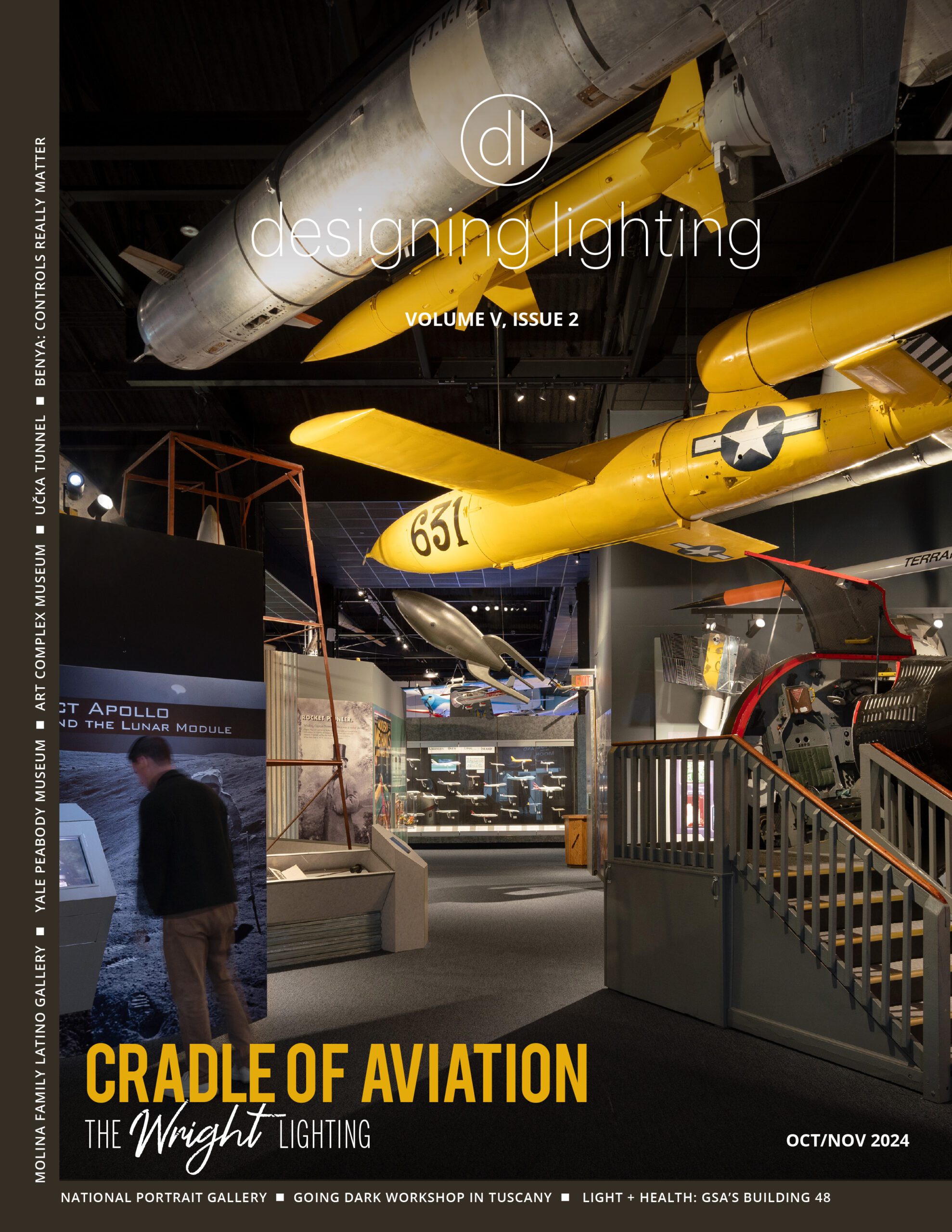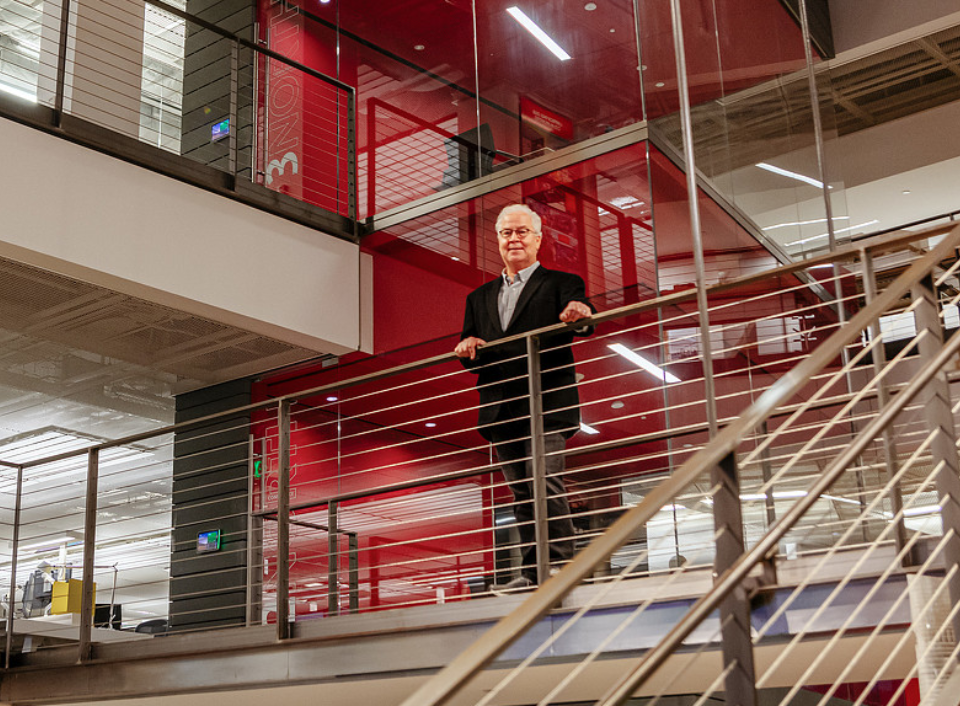Bob Weis is a storyteller. He has written screenplays and books during a long career in the entertainment industry. But the stories he creates aren’t limited to movie screens and printed pages.
With a career that spans 30 years at Disney (most recently as the president of Walt Disney Imagineering), Bob has created, designed, and developed physical stories and immersive experiences for some of Disney’s most iconic projects around the globe. From the U.S. to Shanghai, Tokyo to Paris, Weis’ design and storytelling imprint has been indelibly left on theme parks, attractions and rides, resorts, and cruise ships. He has also consulted with major clients including Smithsonian, National Geographic, NASA, and the United States Navy, among others.
Recently, Bob joined Gensler to lead Global Immersive Experience Design and take the firm’s design innovation to the next level, expanding its commitment to reclaiming human experiences in the spaces and places where we live, work, and play. In his new role, Weis will collaborate with Gensler’s global leadership platform to envision and bring to life unique experiences for clients across a variety of industries where the firm is immersed — from entertainment, lifestyle, hospitality, retail, sports, mixed use, and cultural institutions to wellness and workplace.
We sat down with Bob to ask him about his decision to join Gensler from Disney, and to take a deeper dive into the idea of storytelling through immersive experiences and why the physical experience of our buildings and cities is more important now than ever before.
What do immersive experiences mean to you?
The idea of immersing people into a story goes back thousands of years, but I because I spent so many years at Disney, I like to point to Walt Disney’s invention of Disneyland. This idea for a theme park was very different from his movies. He would be putting real people in real places with real actors playing characters that would interact with the guests.
Today, I think we’re seeing the evolution of this idea, and there is a tremendous amount of invention and innovation going on in the space.
Are there specific characteristics of an immersive experience for you?
I think there are three main elements of an immersive experience.
First, these are experiences that people want to do together. We’re tired of being at home in front of our computers. We’re looking for communal celebratory experiences with our friends, family, and other people in our community.
This is why Gensler is so important in the development of immersive experiences. The firm already has such an incredible commitment to the cultural vibrancy of cities and the place where we live, work, and play. It’s exciting to think that we can create great stories that people can experience together in new ways and do them in the spaces Gensler already creates.
The second element is that we are immersing people into the space, meaning we are surrounding them with the theme, the story, and the idea. This is different from what we’re used to, which is watching things on a screen or seeing a piece of sculpture or painting in a museum. In this medium of immersive experiences, we want to break out of the screen and really envelop all the senses — sight, smell, emotion, the feel — all the things that can tell the story in physical ways that you will never forget.
And the last element that is key to an immersive experience — and this is maybe the hardest to accomplish — is that we are giving people agency in the story itself. We want people to feel that these experiences are their story and that the story becomes about them. Think of going to the theater, but instead of watching the play from your seat, you are part of the play. You are impacting how the conflict is resolved or how the art piece is accomplished. You have a real authentic impact on the experience. It’s an active role.
Why is it important for people to feel like they are part of the story of a place?
Way back when, Jacques Cousteau used to say that in order for people to care about a thing or a place, they have to love it. He cared about the environment so his goal was to create a TV show that would make people love the ocean and the ocean creatures. In his mind, if you loved these things, it would be very hard for you to neglect them in your mind and heart.
This is what successful experiences can become. If we can create experiences in places, it will imprint on people a sense of connection that can be very powerful. This is not a new idea for architects. Our whole mission is to connect to people through space, through places, through the activities that take place in great spaces. Designing immersive experiences feels like a logical next step in that design process.
And for those of us designing immersive experiences, it’s up to us to find ways to actively put people more physically and emotionally in the story so that they become truly invested and connected to a place.
There are some examples of immersive entertainment experiences that come to mind such as Meow Wolf in Santa Fe and Denver or the Disney theme parks. Are there elements of those ideas that can be applied to other types of architectural spaces?
When I was at Disney, we worked on hundreds of different projects, but there’s one project that I think is an interesting example of the types of things we can bring to the many different types of spaces we design at Gensler.
We were asked to redesign the look and feel of a hospital ward for children with cancer. Taking a child to a children’s hospital for anything is probably the most traumatic moment for that child and very likely for that child’s parents. So, we asked ourselves how we could use Disney and Disney characters to reduce stress, create warmth, and lower the intimidation of a hospital. We wanted to create a story in the children’s ward that would communicate positively to both patients and parents who are going through this process.
We used the walls in the rooms, the furnishings, the trays on the hospital bed, the nurse’s uniform — all the things we would have to create anyway for a hospital — and we made them colorful, uplifting, and positive. And it had a huge impact.
What’s exciting for me is bringing immersive experiences and stories into everyday normal life so that we can make people’s lives better. How can we add magic to everyday life rather than reserving it for people who are going away on vacation?
I love the idea that there is a story to be crafted first before you begin to design a space. It’s a different way of thinking about a problem.
Many design fields think in this way: First, orchestrate the movement of people and ideas through the story and that will give you all the keys you need to design the physical space. People want to be inspired and moved in some way and feel some kind of connection to a space, so I think we all benefit from using storytelling as a critical part of any space.
If you go to an airport, it’s not just to get on a plane. Airports are the beginning or middle or end of some important story for people, so what do we do that signifies that for people? That’s the way you think about space from a story point of view. Human stories unfold in place.
What are the roots of your interest in designing creative experiences? Was there some moment in your professional career where you knew this is what you wanted to focus on?
I got my degree in architecture, but at least half my time in school was also in the theater department. I was incredibly enamored with design from an early age, but also enamored with performance, storytelling, acting, directing, and writing stories. For me, architecture and storytelling have always been melded together. I love the idea of place and how you bring a place into a total story.
After college, I was lucky to go straight to Walt Disney Imagineering where I could combine these skills of design with an understanding of storyline and how those two things bring spaces to life with live entertainment and embellishments of things like graphics, color, and light.
Early in my career I was also able to do projects in Tokyo, China, Europe, and other places, and that made me realize that culturally there’s a lot of shared interest in what we expect of our spaces. People around the world have an expectation that cities and places are going to inspire us in some way and that they’re going to communicate to us in some way.
Why now? Why are shared physical experiences so important today?
The pandemic triggered an explosion of interest in real, physical experiences. We were so cooped up in our homes, alone and face to face with screens that we are craving interaction with other people, and we are craving new experiences that are different than what we’re used to.
But we shouldn’t give all the credit to the pandemic. There are also a lot of artists and designers out there — and they’ve been doing this for years — who are trying new things and pushing the envelope on what an experience is. There’s a hunger to try things, which is creating this beautiful point in time where people are trying things, but there aren’t a lot of rules or known best practices.
It all comes back to the three things I talked about earlier. People want experiences they can do with other people. They want an experience that challenges and brings together their senses. And they want experiences in which they feel like they are impacting the story in some ways.
With your background and experience at Disney, you could have collaborated with any company. Why Gensler?
Gensler has long designed for the human experience, and I hope to build on the amazing work and culture the firm as created. I’m also passionate about doing things that are closer to people’s everyday lives, and there’s no other place I can realize that passion than at Gensler. The firm does business in hundreds of cities all over the world and across 29 different practice areas. Every one of these practice areas — from sports and retail to airports and the workplace — will all potentially have an application to the type of immersive storytelling. It’s the next step.
Visionary companies are seeking to create new experiences in the spaces they design with Gensler because they know that this is what people are yearning for as we interact with the world around us. Gensler’s commitment to leading the future of design is perfectly aligned with my passion for developing unique, immersive experiences with a diversity of creative voices.
Now, I get to take my passion, expand it, and inject experiences into projects all over the world that will reach people in their everyday lives.




